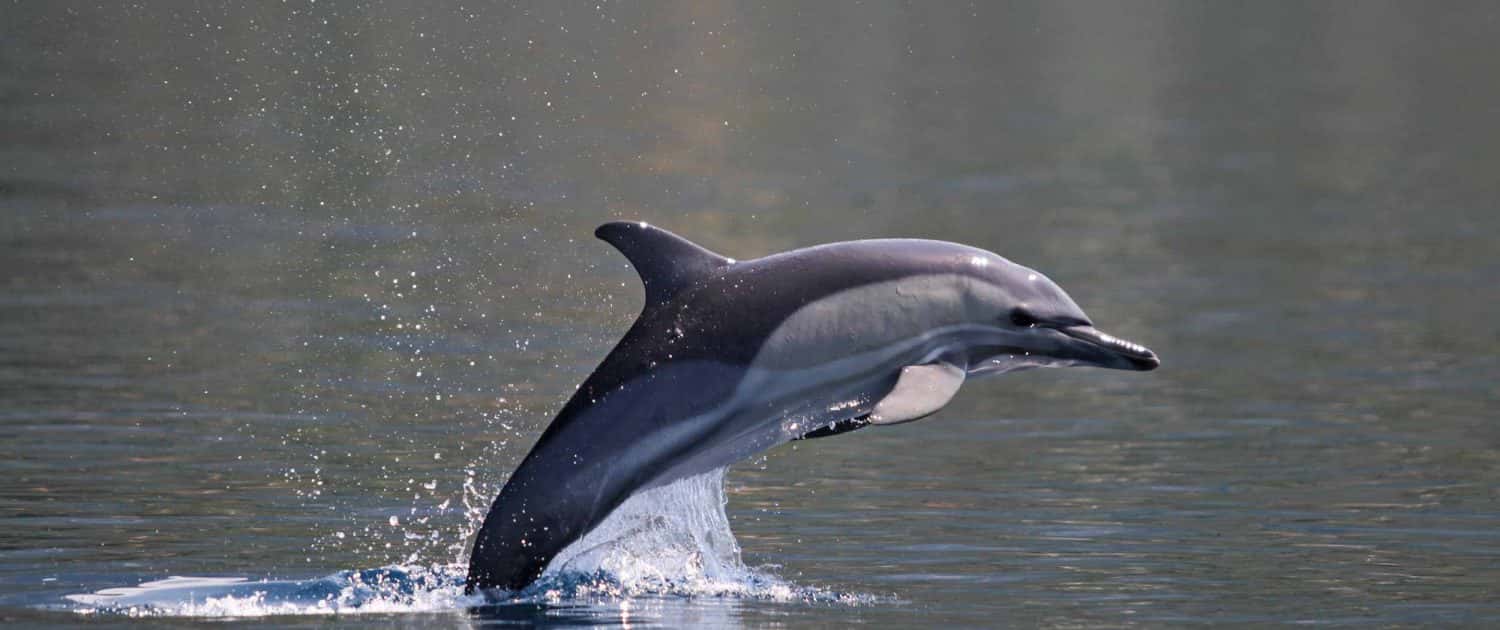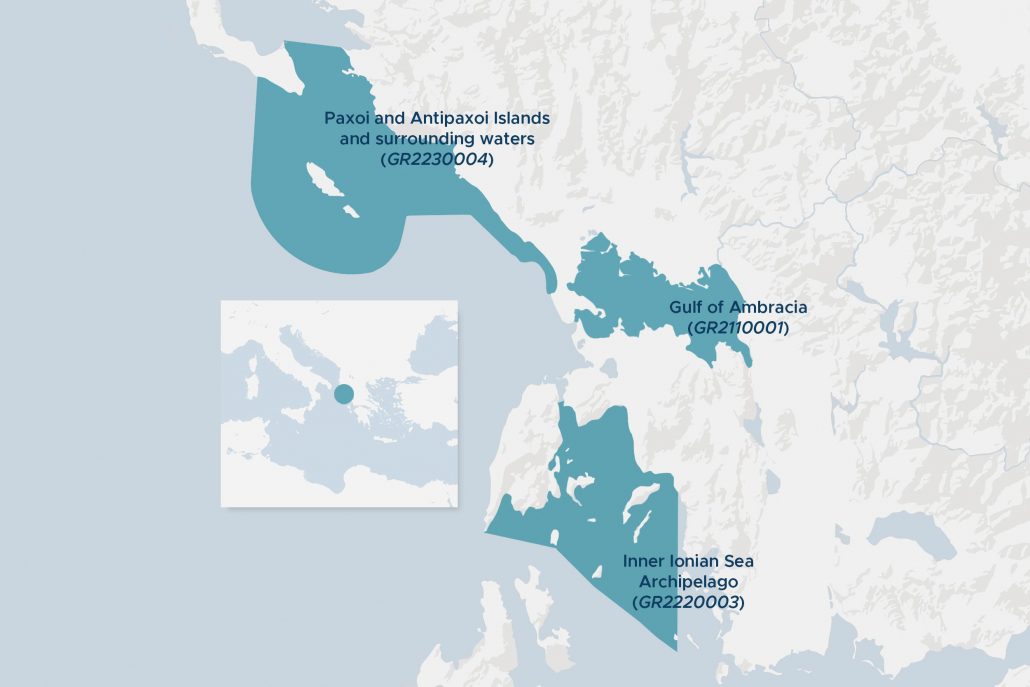Ionian Dolphin Project’s study areas in Greece
The Gulf of Amvrakikos and Inner Ionian Sea Archipelago, two great opportunities for understanding dolphins
IDP study areas are remarkably diverse in terms of environmental features and threats posed by human activities, therefore offering opportunities for understanding the links between dolphin status and habitat quality in different situations.
The research is concentrated primarily in these three Natura 2000 areas:
- The Inner Ionian Sea Archipelago (site code GR2220003), where we study common dolphins, bottlenose dolphins and Mediterranean monk seals.
- The Gulf of Ambracia (GR2110001), where bottlenose dolphins are the only cetacean species present.
- The waters surrounding the islands of Paxoi and Antipaxoi (GR2230004), where bottlenose, common and striped dolphins are regularly present, and monk seals are occasionally sighted.
The Gulf of Ambracia, or Amvrakikos Gulf, is our main study area and the place where the IDP field station is based. The Gulf is a semi-closed basin and one of the most productive coastal areas of Greece. Research conducted by the Tethys Research Institute since 2001 indicates that it hosts one of the highest densities of bottlenose dolphins of the Mediterranean Sea. Based on photo-identification work (81,200 dorsal fin photos filed and 196 individuals identified between 2001 and 2020), these dolphins show high levels of site fidelity within the Gulf. Individual movements in and out of the Gulf appear to be limited, probably owing to dramatic differences between the shallow, highly productive, turbid waters of the Gulf and the deep, oligotrophic (low-nutrient), Ionian Sea open waters.
The Gulf of Ambracia is reportedly at risk owing to pollutants carried by the rivers Louros and Aracthos and to the wastewaters from the processing of agricultural products by small industries in the broader area. Human activities including agriculture, livestock, grazing, fishing and intensive fish farming have expanded rapidly in recent years, causing degradation of the wetland areas in the northern part of the Gulf. Expansion of fish farming and agricultural intensification threaten the food web by increasing pollution levels. In April 2008 the Gulf, which is also inhabited by loggerhead sea turtles and has a rich bird fauna including rare species, became a National Park. However, no management action has been taken to address problems related to increasing eutrophication, pollution and other anthropogenic impacts, and no consideration is being given to the Gulf’s abundant marine megafauna.








